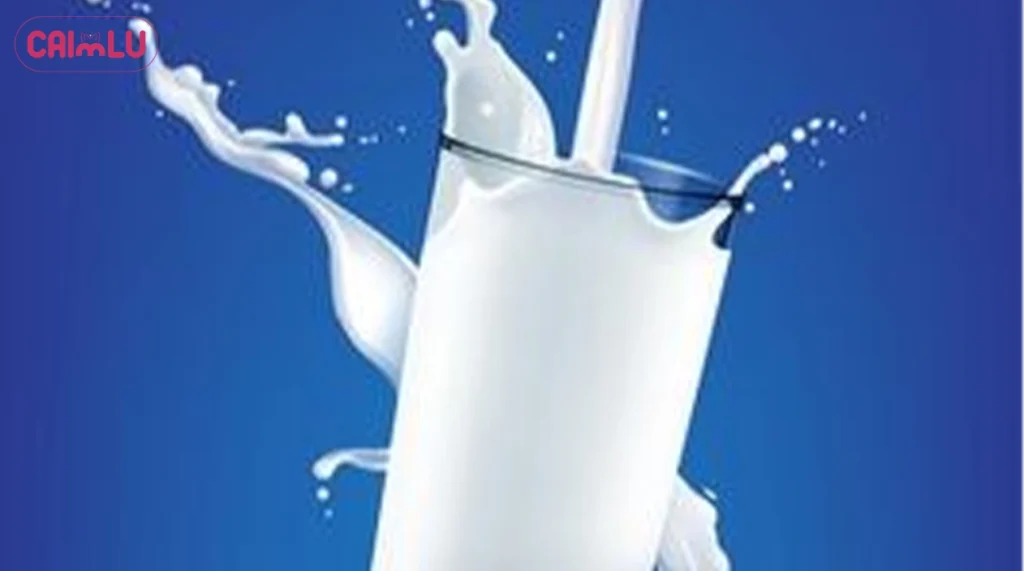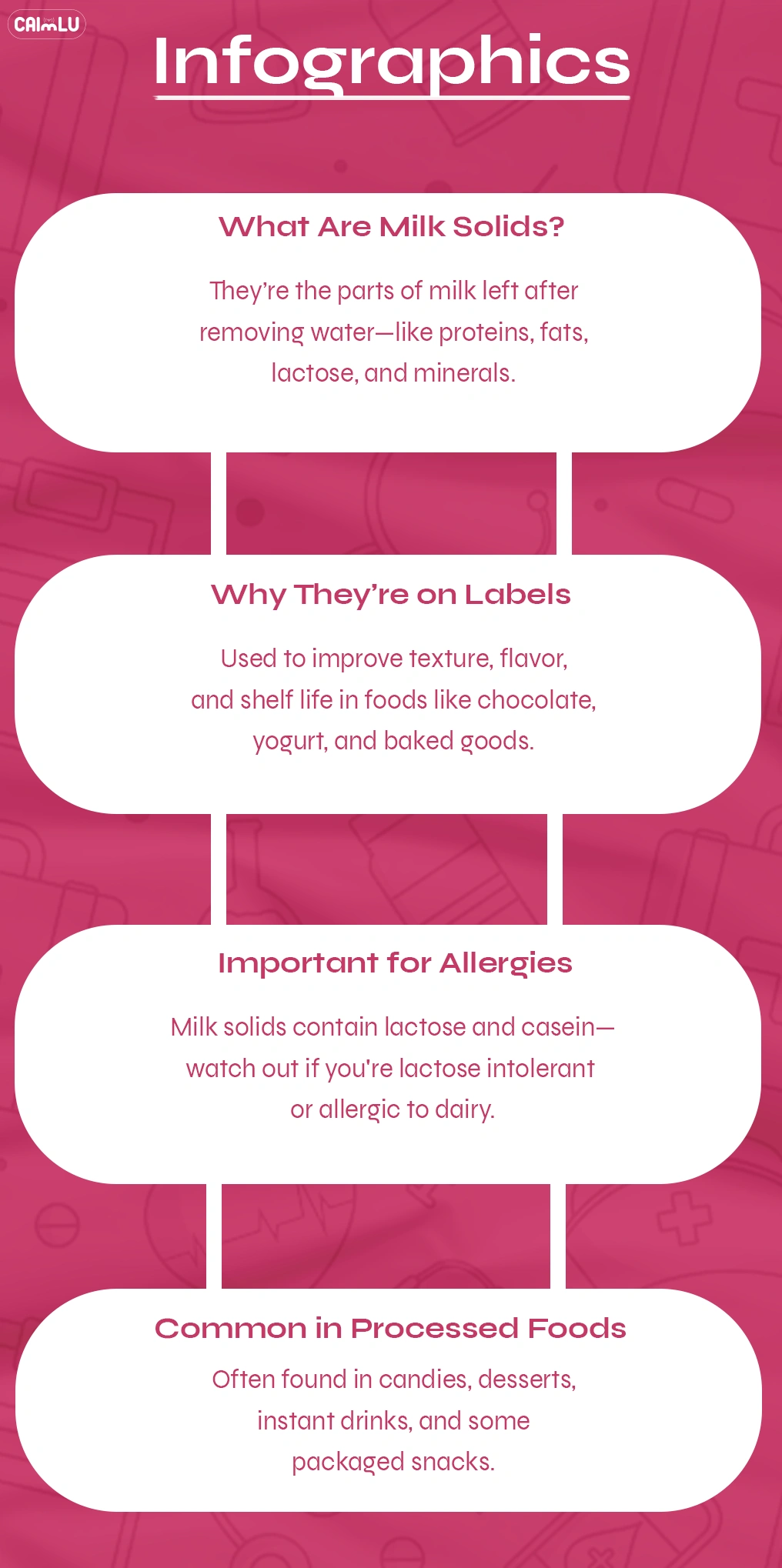Imagine you get up, add milk to your morning shake, and start your day without knowing the superstar nutrient that was with you all this time. The key to that is milk solids, which contain concentrated protein, vitamins, and minerals, but are easily ignored.
Now, your fitness, cooking, and well-being have the advantage of knowing what milk solids are as well as how they enable your fitness, cooking, and well-being. In this guide, we take apart all the facts, what is considered solid milk, and how the non-fat milk solids can supplement your nutrition.
Understanding Milk Solids
Let’s dive into definitions and the science behind these essential nutrients.
What are Milk Solids & their Terms?
They are the solid part of the milk that contains nutrients after water and possibly fat is removed. Milk is normally ~87 percent water and ~13 percent total solids. This includes:
- Milk fat solids: butterfat, cream, and fat-soluble (A, D, E, K) vitamins.
- Non-fat milk solids (NFMS): proteins (casein/whey), lactose, minerals.
Whereas the milk product only contains the words milk solids on the label, it most likely implies that the nutrients in the product are concentrated, very important in determining what you take in.

Visit: Posterior Placenta: Meaning, Benefits & Impact on Pregnancy
What is Solid Milk?
The solid milk is nothing but milk in the form of:
- Non-fat or whole milk powder
- Milk, condensed or evaporated
- Dry cheeses or cheese curds
It is more convenient to remove water, and the nutrition is concentrated. It is all referred to as little solid milk or milk powder.
What are Dairy Product Solids?
Dairy product solids refer to all the kinds of solids of milk present in several foods, such as cheese and yogurt, and whey powders. These solids provide structure, protein, and flavor to your favorite food and allow shelf stability and flexibility.
Discover: Weight Loss Drugs During Pregnancy: Safety, Risks, and Fertility Impacts
Why Milk Solids Matter
Uncover the true power of solids across fitness, health, and recipe applications.
Nutrient Breakdown—More Than Meets the Eye
| Milk Solid Type | Key Nutrients | Benefit Example |
| Non‑fat milk solids | ~26 g protein, 40–50 g lactose, 1200 mg calcium per 100 g | Match 3 egg whites for protein |
| Milk fat solids | Fat-soluble vitamins, essential fatty acids | Aids vitamin absorption |
| Minerals & Vitamins | Phosphorus, B2, B12, vitamins A/D | Supports energy and immunity |
By choosing the correct form—whole or NFMS—you pick the nutrient ratio that fits your goals.

Fitness & Health Fuel
- Protein supports muscle recovery and sparks metabolic activity.
- Carbs (lactose) give fast fuel to muscles and the brain.
- When choosing non‑fat milk solids, you get clean protein without extra fat—perfect for lean athletes.
A 2016 study showed that protein from solids of milk raised seniors’ muscle strength by 15% over 12 weeks.
Explore: Truman Show Syndrome: Feeling Watched? Causes, Signs & What to Know
Cooking & Baking Advantages
Chefs and home cooks love solids of milk:
- “Milk powder creates richer, chewier textures” —Chef Christina Tosi.
- Cheese producers adjust fat and NFMS for ideal yields.
- The US requires 6–10% milk solids-not-fat for ice cream quality.
These solids deepen flavor, improve mouthfeel, and help emulsify ingredients.
Important Health Benefits
In this case, we look at the effects on bones, digestion, weight, and so on.
Bones & Muscles Support
Instead of containing 1,300 to 1,500 mg of calcium in 100 g of NFMS, solids of milk contain casein and whey protein to aid in the growth and maintenance of the bone.
The combination of protein and calcium is optimal in ensuring the health of the bones and restoring muscle.
Digestion & Lactose Tolerance
- Fat is removed by non-fat milk solids; however, lactose does not get removed, and remains ~4050 g per 100g.
- The lactose dose that most people can tolerate on a single ingestion is 12 g.
- There are mild forms that include lactose-reduced powders or fermented solids (yogurt).
In the event that you are lactose sensitive, then adding NFMS to probiotic-filled foods might facilitate digestion.
Weight Management & Blood Sugar Levels
- The carbs are found in milk solids; however, it is combined with protein to delay the release of sugar.
- 2 tablespoons non-fat powder = 8 grams protein, 45 kcal, good to follow a calorie count or a weight program.
- Replace pure water and powder with high-cal smoothies, and receive nutrition along with fewer empty calories.

Learn More: Restore Health Urgent Care: Fast, Trusted Care When You Need It Most
Purchase, Store, and Usage of Milk Solids
An easy-to-use manual on how to choose the correct type and how to store it.
Selecting Good Products
- Search on the front label and find either non-fat milk solids or milk solids-not-fat.
- Use organic or USDA-labeled products.
- Avoid those that contain other kinds of sugar, particularly in the so-called flavored kinds.
Storage and Shelf-Life
- Powdered milk should be stored in a dry, airtight place and cooled.
- The shelf life is 12 months.
- Add oxygen absorbents or Silica to enhance life.
Evaporated or sweetened condensed milks require refrigeration and should be consumed no later than 3- 4 weeks after opening.
Cooking Integration
- Rehydration: Add 4 Tbsp plain NFMS to 1 cup of water = milk. Combine to avoid lumps.
- Bakery: Add 1-3 Tbsp to dough or batter- increases protein, flavor, and moisture.
- Beverages: A creamer for coffee, tea, as well as smoothies.
- Savory foods: Add depth to soups, sauces, or casseroles without weight.
The Great Myth of Solids of Milk
Such questions come into mind: “Is powdered milk artificially flavored?” No-unsweetened milk solid taste like light milk. Repair lumps by rehydrating gradually, or just cook them in a dish.
Worried about loss of nutrients in flash—drying? Research indicates that it does not lose most of the protein and calcium. A number of brands even reinforce their powders in order to compensate for the loss in case there is even a small loss.
Afraid to find out that solid milk is a low-priced alternative? In nutrient terms, it is the same as fluid milk. The super saving factors are convenience, variety of usage, and shelf life- it is about intelligent storing and intelligent cooking.
Check this out: Flu Shot While Sick – Should You Wait or Get Vaccinated?
Conclusion
Whole or non-fat milk solids are the bottled-up nutrient power of milk that is ready to use. They are muscle food, bone nutrients, and cooking stimulators all in a package devoid of any wastage or excess fat. These dairy product solids range from breakfast shakes to artisan cheeses, and guarantee quality food and food preparation. They are your superfood whenever selected and stocked wisely.
Immerse yourself in the world of solids and change how you think about nutrition and recipes: eat smarter, cook better, and appreciate the depth they bring into your life.
